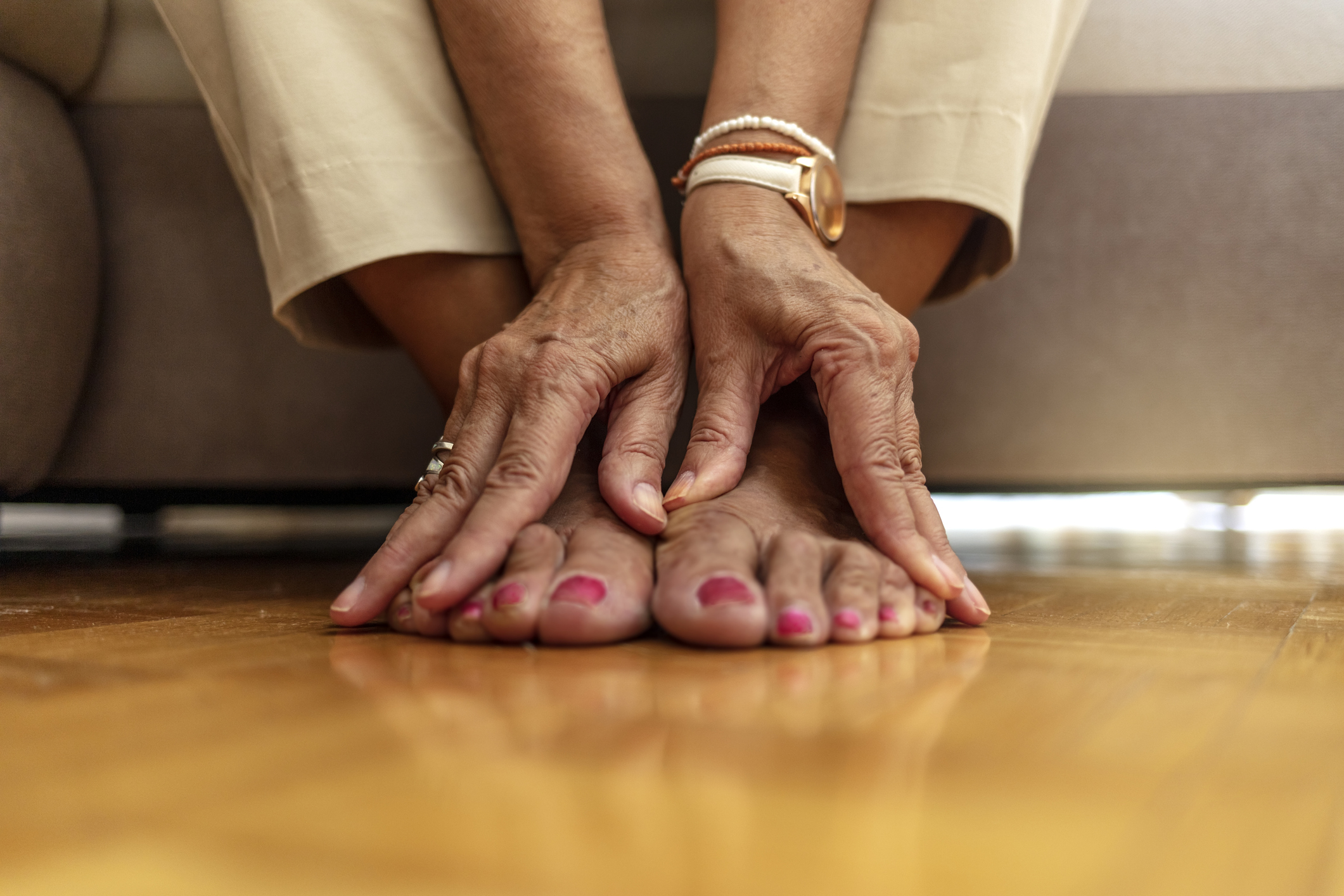
There are many obstacles to senior foot health, but these tips from our experts can help.
It is challenging to put your best foot forward when pain permeates each step. Foot issues are normal when we grow older, which is understandable; there are so many intricate bones that bear our bodies’ weight. Additionally, because they are far away from the heart, our feet might not be getting the amount of oxygen-rich blood needed to stay healthy – specifically if a health condition like diabetes restricts blood circulation to the feet.
However, many older adults opt to simply just grin (or grit their teeth) and bear it, as opposed to proactively managing senior foot health. This can result in not only growing discomfort, but compromised mobility and balance problems. Difficulties with the feet could be a warning sign for other health issues that need diagnosis and treatment.
Watch Out for These Common Senior Foot Issues
Foot pain might result from:
- Dry skin. During the cold winter season, dry skin is common. On the feet, it may cause cracks that aren’t just painful, but set the stage for infection.
- Callouses and corns. These dense patches of dead skin on the feet usually arise from the irritation from poorly fitting shoes.
- Bunions. As opposed to corns and callouses, bunions are the result of changes to bone structure. They can be very painful, usually occurring on the exterior part of the big toe joint.
- Hammertoes. Instead of all of the toes lying flat, hammertoes are misshapen and point up. You may notice a corn in conjunction with the deformed toe.
- Arthritis. Arthritis can affect any of our joints, including the feet, generating both pain and mobility issues.
- Plantar fasciitis. Plantar fasciitis is a consequence of bony growths formed when a ligament on the heel becomes inflamed. Walking and standing can be very painful with this issue.
- Ingrown toenails. Toenails that grow at a different angle than normal may become ingrown into the flesh of the toe, often requiring a surgical procedure to eliminate.
- Fungal infections. Damp feet make a great breeding ground for fungus that may occur between the toes.
Dr. Said Atway, clinical professor of podiatry at The Ohio State University Wexner Medical Center, sees seniors suffering from these kinds of issues on both ends of the spectrum: either highly active and developing damage from excessive use, as well as individuals with a sedentary lifestyle experiencing limited circulation to the feet and poor general health. He stresses the significance of proper footwear for older adults, who should keep from going barefoot or wearing shoes with too little support, such as sandals.
To find the best-fitting, most comfortable shoes, he recommends:
- Shoe shopping later in the day, as gravity causes the feet to swell a bit throughout the day
- Testing out shoes by walking around in them for at least 20 minutes; giving them a test run on a carpeted area at home should avoid any wear on the soles of the shoes, so they can be exchanged if uncomfortable
- Seeking the advice of a podiatrist regarding the best style of shoe for a senior’s specific concerns
Keeping the feet clean, moisturized, and dry, and performing daily inspections to check for issues, is suggested for all older adults. A yearly visit with the podiatrist can also help prevent problems.
At-Home Care Company, a provider of exceptional in-home care in Des Moines and the surrounding communities, is here to help older adults kick up their heels in many ways: ensuring good foot hygiene, providing transportation to look for shoes or to the podiatrist, taking walks together to enhance blood circulation, and much more! Contact us at 515-292-2650 for a free in-home assessment today.
